Wikipedia says “The lead vocalist in popular music is typically the member of a group or band whose voice is the most prominent melody in a performance where multiple voices may be heard”.
It also adds “The lead vocalist may also be called the main vocalist or lead singer. Especially in rock music, the lead singer or solo singer is often the front man or front woman”. A BBC Radio 4 parody series ‘Radio Active’ first made the joke in 1981 that “Ringo Starr isn’t the best drummer in THE BEATLES” and in a similar way, it could be said that Bernard Sumner is not the best singer in NEW ORDER.
However, the lead vocalist is considered the figurehead and often the character of a band so regardless of what is said publicly about democracy, a hierarchy inevitably ensues.
But what happens when another member of the band takes their turn at the front? In most cases, it is just a one-off although sometimes it becomes recurring feature over successive albums. These tracks can meet with varying degrees of success, but there have even been occasions where the second vocalist eventually becomes lead singer! However, there have been strange situations where a less vocally competent instrumentalist is unhappy about the attention that a singer is getting and insists on switching roles, thus ensuring that the band does not play to any of its strengths!
So taking things back to front and with a limit of one track per act, ELECTRICITYCLUB.CO.UK presents a list of 25 songs not sung by the lead vocalist in chronological, then alpnabetical order…
ULTRAVOX Mr X (1980)
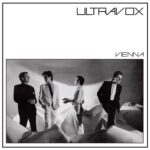 Having been an idea that dated back to the John Foxx-era of ULTRAVOX just before his departure, the KRAFTWERK influenced robotic spy story of ‘Mr X’ was voiced by Warren Cann while Midge Ure was settling in as the band’s new lead vocalist. The track had begun as ‘Touch & Go’ and been premiered live. In a gentlemen’s agreement, keyboardist Billy Currie gave his melody of ‘He’s A Liquid’ in return for Foxx’s melody to ‘Touch & Go’, hence the structural similarity to ‘Mr X’.
Having been an idea that dated back to the John Foxx-era of ULTRAVOX just before his departure, the KRAFTWERK influenced robotic spy story of ‘Mr X’ was voiced by Warren Cann while Midge Ure was settling in as the band’s new lead vocalist. The track had begun as ‘Touch & Go’ and been premiered live. In a gentlemen’s agreement, keyboardist Billy Currie gave his melody of ‘He’s A Liquid’ in return for Foxx’s melody to ‘Touch & Go’, hence the structural similarity to ‘Mr X’.
Available on the album ‘Vienna’ via Chrysalis Records
DEPECHE MODE Any Second Now (1981)
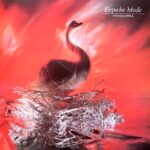 Although now known as a songwriter, Martin Gore had contributed an instrumental ‘Big Muff’ and one song with lyrics ‘Tora! Tora! Tora!’ on DEPECHE MODE’s debut album. Written by Vince Clarke like most of ‘Speak & Spell’, ‘Any Second Now’ was a beautiful minimalist set piece that stood out amongst the dance friendly synthpop tunes and suited an understated tone of expression. And so began a tradition of Gore taking on DM’s ballads instead of front man Dave Gahan.
Although now known as a songwriter, Martin Gore had contributed an instrumental ‘Big Muff’ and one song with lyrics ‘Tora! Tora! Tora!’ on DEPECHE MODE’s debut album. Written by Vince Clarke like most of ‘Speak & Spell’, ‘Any Second Now’ was a beautiful minimalist set piece that stood out amongst the dance friendly synthpop tunes and suited an understated tone of expression. And so began a tradition of Gore taking on DM’s ballads instead of front man Dave Gahan.
Available on the album ‘Speak & Spell’ via Sony Music
DRAMATIS Turn (1981)
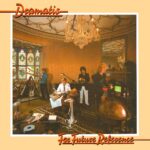 DRAMATIS were the former Gary Numan live band and while their only album to date ‘For Future Reference’ was musically virtuoso, the band’s Achilles’ heel was vocals. RRussell Bell and Denis Haines were the quartet’s main singers and Numan himself guested on DRAMATIS’ biggest hit ‘Love Needs No Disguise’, but the classically trained multi-instrumentalist Chris Payne found himself a reluctant vocalist on a song he had written called ‘Turn’; “I have never felt comfortable about my own voice” he clarified.
DRAMATIS were the former Gary Numan live band and while their only album to date ‘For Future Reference’ was musically virtuoso, the band’s Achilles’ heel was vocals. RRussell Bell and Denis Haines were the quartet’s main singers and Numan himself guested on DRAMATIS’ biggest hit ‘Love Needs No Disguise’, but the classically trained multi-instrumentalist Chris Payne found himself a reluctant vocalist on a song he had written called ‘Turn’; “I have never felt comfortable about my own voice” he clarified.
Available on the album ‘For Future Reference’ via Cherry Red Records
https://www.discogs.com/artist/45761-Dramatis
NEW ORDER Doubts Even Here (1981)
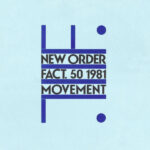 After the end of JOY DIVISION, Peter Hook, Bernard Sumner and Stephen Morris reconvened as NEW ORDER as a symbol of their fresh start while recruiting Gillian Gilbert on keyboards and guitar. Synths and drum machines were taking greater prominence but not entirely. While Sumner did the majority of the vocals on their debut album ‘Movement’, it was Hooky’s fraught delivery on ‘Doubts Even Here’ and words from The Bible spoken by Gilbert that provided the album’s most glorious moment.
After the end of JOY DIVISION, Peter Hook, Bernard Sumner and Stephen Morris reconvened as NEW ORDER as a symbol of their fresh start while recruiting Gillian Gilbert on keyboards and guitar. Synths and drum machines were taking greater prominence but not entirely. While Sumner did the majority of the vocals on their debut album ‘Movement’, it was Hooky’s fraught delivery on ‘Doubts Even Here’ and words from The Bible spoken by Gilbert that provided the album’s most glorious moment.
Available on the album ‘Movement’ via Rhino
KISSING THE PINK Watching Their Eyes (1982)
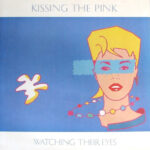 Best known for the profound anti-war statement ‘The Last Film’ which entered the Top20 in 1983, KISSING THE PINK had Nick Whitecross as their lead singer. Produced by Colin Thurston, the baroque opera tinged ‘Watching Their Eyes’ saw saxophonist Josephine Wells provide a haunting impassioned vocal. Wells went on to play live with TEARS FOR FEARS but sadly, she was to later battle her own traumas as a survivor of the Marchioness boat disaster in 1989 which led to the deaths of 51 people.
Best known for the profound anti-war statement ‘The Last Film’ which entered the Top20 in 1983, KISSING THE PINK had Nick Whitecross as their lead singer. Produced by Colin Thurston, the baroque opera tinged ‘Watching Their Eyes’ saw saxophonist Josephine Wells provide a haunting impassioned vocal. Wells went on to play live with TEARS FOR FEARS but sadly, she was to later battle her own traumas as a survivor of the Marchioness boat disaster in 1989 which led to the deaths of 51 people.
Available on the album ‘Naked’ via Cherry Red Records
https://www.facebook.com/kissingthepink/
CHINA CRISIS Wishful Thinking (1983)
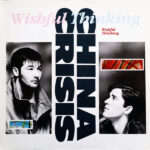 With his OMD success, Mike Howlett produced what turned out to be the most synth based CHINA CRISIS long player. Utilising Emulator strings and a pizzicato sample derived from plucking an acoustic guitar string close to the bridge, ‘Wishful Thinking’ was written and thus sung by guitarist Eddie Lundon. A sweetly textured, melodic pop single that deserved its hit status, lead singer Gary Daly responded with ‘Never Too Late’ but that song was shelved to eventual B-side status for sounding too similar.
With his OMD success, Mike Howlett produced what turned out to be the most synth based CHINA CRISIS long player. Utilising Emulator strings and a pizzicato sample derived from plucking an acoustic guitar string close to the bridge, ‘Wishful Thinking’ was written and thus sung by guitarist Eddie Lundon. A sweetly textured, melodic pop single that deserved its hit status, lead singer Gary Daly responded with ‘Never Too Late’ but that song was shelved to eventual B-side status for sounding too similar.
Available on the album ‘Working With Fire & Steel – Possible Pop Songs Volume 2’ via Caroline Records
https://www.facebook.com/chinacrisisofficial/
TEARS FOR FEARS The Hurting (1983)
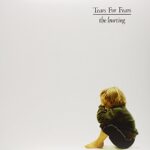 While Roland Orzabal is more or less seen as TEARS FOR FEARS lead singer these days, that’s not how it was perceived at the start even though he sang their debut single ‘Suffer The Children’. Following three Top10 hit singles in a row prior to the release of their debut album ‘The Hurting’, Curt Smith was considered the face and the voice of the band. Orzabal was main songwriter and sang lead on the title track with a more angst-ridden take than was heard on the Smith-fronted singles; this was to become the band’s future dynamic.
While Roland Orzabal is more or less seen as TEARS FOR FEARS lead singer these days, that’s not how it was perceived at the start even though he sang their debut single ‘Suffer The Children’. Following three Top10 hit singles in a row prior to the release of their debut album ‘The Hurting’, Curt Smith was considered the face and the voice of the band. Orzabal was main songwriter and sang lead on the title track with a more angst-ridden take than was heard on the Smith-fronted singles; this was to become the band’s future dynamic.
Available on the album ‘The Hurting’ via Mercury Records
YAZOO Happy People (1983)
 Of Vince Clarke’s most polarising song since ‘What’s Your Name?’ for DEPECHE MODE, Alison Moyet said “That could have been the beginning of the end for us… in fact, no it wasn’t because Vince had already decided to leave. ‘Happy People’, I just tried singing it a couple of ways and I just hit him with ‘I can’t do this, you want it sung, you sing it yourself mate!’… so he sang it himself, fair play to him”. The song itself was an ironic send-up of middle aged political activists.
Of Vince Clarke’s most polarising song since ‘What’s Your Name?’ for DEPECHE MODE, Alison Moyet said “That could have been the beginning of the end for us… in fact, no it wasn’t because Vince had already decided to leave. ‘Happy People’, I just tried singing it a couple of ways and I just hit him with ‘I can’t do this, you want it sung, you sing it yourself mate!’… so he sang it himself, fair play to him”. The song itself was an ironic send-up of middle aged political activists.
Available on the album ‘Three Pieces’ via Mute Records
BERLIN Rumor Of Love (1984)
 Multi-instrumentalist John Crawford had proved himself a capable if almost anonymous singer when duetting with BERLIN front woman Terri Nunn on their 1982 breakthrough track ‘Sex (I’m A…)’. But for the B-side of the 1984 Giorgio Moroder produced single ‘No More Words’, Crawford did a lead vocal turn on the Mike Howlett-helmed ‘Rumor Of Love’ which echoed Scott Walker and ended up as a bonus track on the original edition of the ‘Love Life’ album
Multi-instrumentalist John Crawford had proved himself a capable if almost anonymous singer when duetting with BERLIN front woman Terri Nunn on their 1982 breakthrough track ‘Sex (I’m A…)’. But for the B-side of the 1984 Giorgio Moroder produced single ‘No More Words’, Crawford did a lead vocal turn on the Mike Howlett-helmed ‘Rumor Of Love’ which echoed Scott Walker and ended up as a bonus track on the original edition of the ‘Love Life’ album
Available on the album ‘Love Life’ via Rubellan Records
OMD Never Turn Away (1984)
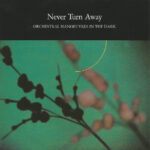 While Andy McCluskey was the lead singer of OMD, Paul Humphreys would see his less frequent vocalled tracks released as singles with ‘Souvenir’, ‘Secret’ and ‘Forever Live & Die’ becoming international hits. While their fifth ‘Junk Culture’ saw forays into brass sections, calypso and reggae, ‘Never Turn Away’ was a more traditional OMD ballad with Autumnal atmospheres but while it was a fine album track, it made little impression as a single release.
While Andy McCluskey was the lead singer of OMD, Paul Humphreys would see his less frequent vocalled tracks released as singles with ‘Souvenir’, ‘Secret’ and ‘Forever Live & Die’ becoming international hits. While their fifth ‘Junk Culture’ saw forays into brass sections, calypso and reggae, ‘Never Turn Away’ was a more traditional OMD ballad with Autumnal atmospheres but while it was a fine album track, it made little impression as a single release.
Available on the album ‘Junk Culture’ via Virgin Records
PROPAGANDA Dream Within A Dream (1985)
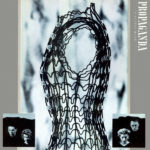 While Susanne Freytag was the original PROPAGANDA vocalist with her stark narrative style, she soon stepped back in favour of her friend and TOPOLINOS bandmate Claudia Brücken. While Freytag’s Germanic prose remained vital on songs such as ‘Doctor Mabuse’ and ‘P-Machinery’, her vocal style suited the lead role on ‘Dream With A Dream’, a 9 minute epic which put a mighty soundtrack to accompany an Edgar Allan Poe poem which was first published in 1849.
While Susanne Freytag was the original PROPAGANDA vocalist with her stark narrative style, she soon stepped back in favour of her friend and TOPOLINOS bandmate Claudia Brücken. While Freytag’s Germanic prose remained vital on songs such as ‘Doctor Mabuse’ and ‘P-Machinery’, her vocal style suited the lead role on ‘Dream With A Dream’, a 9 minute epic which put a mighty soundtrack to accompany an Edgar Allan Poe poem which was first published in 1849.
Available on the album ‘A Secret Wish’ via ZTT Records
https://www.xpropaganda.co.uk/
KRAFTWERK The Telephone Call (1986)
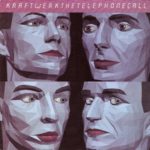 On the disappointing ‘Techno Pop’ née ‘Electric Café’ album, Karl Bartos gave assured performance in his only lead vocal for KRAFTWERK on ‘The Telephone Call’. While the assertive automated phone messages were a sharpened metaphor for female empowerment, band politics were at play when Ralf Hütter refused to let Bartos lip-synch his part on the accompanying monochromatic video although Wolfgang Flür got to mime a single phrase while cast in shadow.
On the disappointing ‘Techno Pop’ née ‘Electric Café’ album, Karl Bartos gave assured performance in his only lead vocal for KRAFTWERK on ‘The Telephone Call’. While the assertive automated phone messages were a sharpened metaphor for female empowerment, band politics were at play when Ralf Hütter refused to let Bartos lip-synch his part on the accompanying monochromatic video although Wolfgang Flür got to mime a single phrase while cast in shadow.
Available on the album ‘Techno Pop’ via EMI Music
PET SHOP BOYS Paninaro (1986)
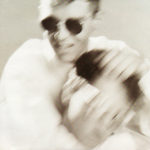 “Passion and love and sex and money – Violence, religion, injustice and death” went the opening phrases of Chris Lowe’s debut lead vocal for PET SHOP BOYS. Dryly spoken rather than sung, the track was a celebration of an Italian fashion cult who were the anti-hipsters of the period and openly loved pop like DURAN DURAN. The middle eight featuring an ‘Entertainment Tonight’ interview saw Lowe deadpan: “I don’t like Country & Western. I don’t like rock music. I don’t like Rockabilly. I don’t like much, really, do I? But what I do like, I love passionately!”
“Passion and love and sex and money – Violence, religion, injustice and death” went the opening phrases of Chris Lowe’s debut lead vocal for PET SHOP BOYS. Dryly spoken rather than sung, the track was a celebration of an Italian fashion cult who were the anti-hipsters of the period and openly loved pop like DURAN DURAN. The middle eight featuring an ‘Entertainment Tonight’ interview saw Lowe deadpan: “I don’t like Country & Western. I don’t like rock music. I don’t like Rockabilly. I don’t like much, really, do I? But what I do like, I love passionately!”
Available on the album ‘Alternative’ via EMI Music
https://www.petshopboys.co.uk/
NITZER EBB Let Beauty Loose (1987)
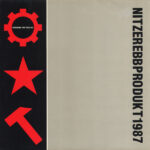 With Douglas J McCarthy fronting NITZER EBB, the singing abilities of instrumentalist Bon Harris only came to the fore with his ‘Songs From the Lemon Tree’ lockdown live streams of solo covers often tinged with falsetto. But on the ‘That Total Age’ album, he had shouted his way through ‘Let Beauty Loose’, a typical slice of frantically paced EBM. Acting as a supersub in late 2021, Harris stood in for a hospitalised McCarthy at two NITZER EBB shows in Palm Beach and Toronto.
With Douglas J McCarthy fronting NITZER EBB, the singing abilities of instrumentalist Bon Harris only came to the fore with his ‘Songs From the Lemon Tree’ lockdown live streams of solo covers often tinged with falsetto. But on the ‘That Total Age’ album, he had shouted his way through ‘Let Beauty Loose’, a typical slice of frantically paced EBM. Acting as a supersub in late 2021, Harris stood in for a hospitalised McCarthy at two NITZER EBB shows in Palm Beach and Toronto.
Available on the album ‘That Total Age’ via Mute Records
BOOK OF LOVE With A Little Love (1988)
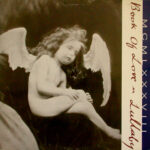 Originally from Philadelphia, BOOK OF LOVE were started by school friends Susan Ottaviano and Ted Ottaviano who were not actually related. Jade Lee and Lauren Roselli Johnson joined later on and the quartet were invited to support DEPECHE MODE on two US tours while their single ‘I Touch Roses’ was reissued in a Daniel Miller remix. Although Susan Ottaviano was lead vocalist, Ted Ottaviano impressed on ‘With A Little Love’ from their second album ‘Lullaby’ which was co-produced by Flood.
Originally from Philadelphia, BOOK OF LOVE were started by school friends Susan Ottaviano and Ted Ottaviano who were not actually related. Jade Lee and Lauren Roselli Johnson joined later on and the quartet were invited to support DEPECHE MODE on two US tours while their single ‘I Touch Roses’ was reissued in a Daniel Miller remix. Although Susan Ottaviano was lead vocalist, Ted Ottaviano impressed on ‘With A Little Love’ from their second album ‘Lullaby’ which was co-produced by Flood.
Available on the album ’Lullaby’ via Noble Rot
https://www.bookoflovemusic.com/
CAMOUFLAGE Sooner Than We Think (1989)
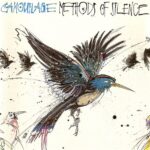 German trio CAMOUFLAGE named themselves after a YELLOW MAGIC ORCHESTRA track and threw their love of DEPECHE MODE into the mix. While Marcus Meyn was lead singer and the voice of hits like ‘The Great Commandment’, on their second album ‘Methods Of Silence’, both instrumentalists Heiko Maile and Oliver Kreyssig did a vocal turn, with the latter’s ‘Sooner Than We Think’ considered worthy enough to merit inclusion on their first two Best Of compilations ‘We Stroke The Flames’ and ‘Rewind – The Best Of 95-87’.
German trio CAMOUFLAGE named themselves after a YELLOW MAGIC ORCHESTRA track and threw their love of DEPECHE MODE into the mix. While Marcus Meyn was lead singer and the voice of hits like ‘The Great Commandment’, on their second album ‘Methods Of Silence’, both instrumentalists Heiko Maile and Oliver Kreyssig did a vocal turn, with the latter’s ‘Sooner Than We Think’ considered worthy enough to merit inclusion on their first two Best Of compilations ‘We Stroke The Flames’ and ‘Rewind – The Best Of 95-87’.
Available on the album ‘Methods Of Silence’ via Universal Music
https://www.camouflage-music.com/en/News
KON KAN Move To Move (1989)
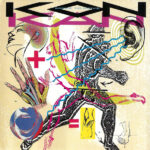 Despite Kevin Wynne being the voice on KON KAN’s sample heavy NEW ORDER inspired international hit ‘I Beg Your Pardon’, he was a hired hand as the mastermind behind the project was Canadian producer Barry Harris. The surprise success led to interest in an album for which Wynne did most of the vocals for, while also being involved in its promotion. However, Harris took the lead on the album’s title track which came out as a 12″ club mix. For the next two KON KAN albums ‘Syntonic’ and ‘Vida!’, Wynne was not recalled.
Despite Kevin Wynne being the voice on KON KAN’s sample heavy NEW ORDER inspired international hit ‘I Beg Your Pardon’, he was a hired hand as the mastermind behind the project was Canadian producer Barry Harris. The surprise success led to interest in an album for which Wynne did most of the vocals for, while also being involved in its promotion. However, Harris took the lead on the album’s title track which came out as a 12″ club mix. For the next two KON KAN albums ‘Syntonic’ and ‘Vida!’, Wynne was not recalled.
Available on the album ‘Move To Move’ via Atlantic Records
https://www.facebook.com/konkanofficial
THE HUMAN LEAGUE One Man In My Heart (1995)
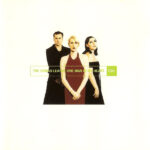 Although the front man and sole remaining founder member, Phil Oakey has often cited Susanne Sulley as the best singer in THE HUMAN LEAGUE. While she famously did a verse on the UK and US No1 ‘Don’t You Want Me?’ as well as various solo phrases on ‘(Keep Feeling) Fascination’ and ‘Heart Like A Wheel’, she didn’t get a lead vocal turn until ‘One Man In My Heart’. The format of the song fitted right in with the rise of female fronted trios like DUBSTAR, SAINT ETIENNE and PEACH.
Although the front man and sole remaining founder member, Phil Oakey has often cited Susanne Sulley as the best singer in THE HUMAN LEAGUE. While she famously did a verse on the UK and US No1 ‘Don’t You Want Me?’ as well as various solo phrases on ‘(Keep Feeling) Fascination’ and ‘Heart Like A Wheel’, she didn’t get a lead vocal turn until ‘One Man In My Heart’. The format of the song fitted right in with the rise of female fronted trios like DUBSTAR, SAINT ETIENNE and PEACH.
Available on the album ‘Octopus’ via EastWest
DURAN DURAN Medazzaland (1997)
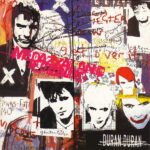 Having been slated for their 1995 covers album ‘Thank You’, DURAN DURAN were in a state of turmoil by 1997; Simon Le Bon was experiencing writer’s block while John Taylor was suffering from depression. This state of affairs led to Nick Rhodes working more closely with guitarist Warren Cuccurullo and the keyboardist taking a spoken word lead on the title track of the ‘Medazzaland’ album. Taylor left halfway through recording the parent long player while the end product was only released in the US, resulting in the end of the band’s tenure with EMI.
Having been slated for their 1995 covers album ‘Thank You’, DURAN DURAN were in a state of turmoil by 1997; Simon Le Bon was experiencing writer’s block while John Taylor was suffering from depression. This state of affairs led to Nick Rhodes working more closely with guitarist Warren Cuccurullo and the keyboardist taking a spoken word lead on the title track of the ‘Medazzaland’ album. Taylor left halfway through recording the parent long player while the end product was only released in the US, resulting in the end of the band’s tenure with EMI.
Available on the album ‘Medazzaland’ via Tape Modern
LADYTRON True Mathematics (2002)
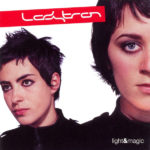 With a template similar to PROPAGANDA, LADYTRON had a singing vocalist in Helen Marnie while Mira Aroyo provided stark spoken prose in her native Bulgarian. While the latter had been an enticing subplot to ‘Discotraxx’ on the debut album ‘604’, Aroyo took the deadpan lead on the fierce ‘True Mathematics’ which opened their next album ‘Light & Magic’. Owing a debt to THE NORMAL’s ‘Warm Leatherette’, it premiered a much harder LADYTRON sound.
With a template similar to PROPAGANDA, LADYTRON had a singing vocalist in Helen Marnie while Mira Aroyo provided stark spoken prose in her native Bulgarian. While the latter had been an enticing subplot to ‘Discotraxx’ on the debut album ‘604’, Aroyo took the deadpan lead on the fierce ‘True Mathematics’ which opened their next album ‘Light & Magic’. Owing a debt to THE NORMAL’s ‘Warm Leatherette’, it premiered a much harder LADYTRON sound.
Available on the album ‘Light & Magic’ via Nettwerk
KID MOXIE Medium Pleasure – Marsheaux remix (2009)
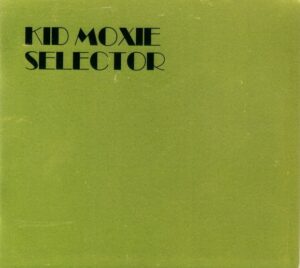 KID MOXIE actually began as a duo comprising of Elena Charbila and Erica Zabowski, recording an EP ‘Human Stereo’ and album ‘Selector’. Although Charbila took the majority of the lead vocals in her airy continental style, Zabowski adopted more of a snarl on ‘Medium Pleasure’ with a lyric attacking cultural and artistic mediocrity. By the time ‘Selector’ was released, the pair had already parted but thanks to a physical CD release on Undo Records, the track was boosted by a remix from MARSHEAUX
KID MOXIE actually began as a duo comprising of Elena Charbila and Erica Zabowski, recording an EP ‘Human Stereo’ and album ‘Selector’. Although Charbila took the majority of the lead vocals in her airy continental style, Zabowski adopted more of a snarl on ‘Medium Pleasure’ with a lyric attacking cultural and artistic mediocrity. By the time ‘Selector’ was released, the pair had already parted but thanks to a physical CD release on Undo Records, the track was boosted by a remix from MARSHEAUX
Available on the album ‘Selector’ via Undo Records
https://www.facebook.com/kidmoxie
DE/VISION Kamikaze (2012)
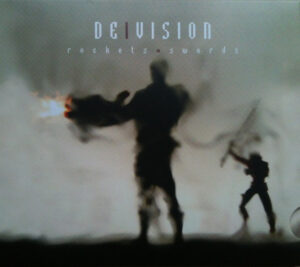 Forming in 1988 and releasing their debut long player ‘World Without End’ in 1994, German duo DE/VISION have been a mainstay in Europe for enthusiasts of darker electronic climes. Comprising of Steffen Keth on vocals and Thomas Adam on synths, their vast majority of their songs have been sung in English. For their 2012 album ‘Rockets & Swords’, there was a surprise in the penultimate song ‘Kamikaze’ which was not only voiced by Adam but also in Deutsch.
Forming in 1988 and releasing their debut long player ‘World Without End’ in 1994, German duo DE/VISION have been a mainstay in Europe for enthusiasts of darker electronic climes. Comprising of Steffen Keth on vocals and Thomas Adam on synths, their vast majority of their songs have been sung in English. For their 2012 album ‘Rockets & Swords’, there was a surprise in the penultimate song ‘Kamikaze’ which was not only voiced by Adam but also in Deutsch.
Available on the album ‘Rockets & Swords’ via Popgefahr Records
TWINS NATALIA I Avoid Strangers (2014)
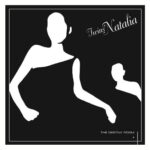 The Anglo-German ensemble TWINS NATALIA comprised of Marc Schaffer, Steve Lippert, synth wizard Dave Hewson and singers Sharon Abbott and Julie Ruler, with the latter three from cult combo POEME ELECTRONIQUE. Touchingly melancholic with classic Weimar Cabaret melodies and vibrant Kling Klang interplay, their music conjured memories of holiday romances. But the uptempo ‘I Avoid Strangers’ featured Hewson on vocals, possessing a paranoia that suited the song perfectly.
The Anglo-German ensemble TWINS NATALIA comprised of Marc Schaffer, Steve Lippert, synth wizard Dave Hewson and singers Sharon Abbott and Julie Ruler, with the latter three from cult combo POEME ELECTRONIQUE. Touchingly melancholic with classic Weimar Cabaret melodies and vibrant Kling Klang interplay, their music conjured memories of holiday romances. But the uptempo ‘I Avoid Strangers’ featured Hewson on vocals, possessing a paranoia that suited the song perfectly.
Available on the album ‘The Destiny Room’ via Anna Logue Records
https://www.facebook.com/twinsnatalia
CHVRCHES High Enough To Carry You Over (2015)
 The two Martin Doherty vocalled tracks on ‘The Bones Of What You Believe’ polarised opinion and his voice made an appearance again on the synth driven funk of ‘High Enough To Carry You Over’ for CHVRCHES second album ‘Every Open Eye’. While nowhere near as accomplished as main vocalist Lauren Mayberry, by taking on a more Americanised drawl in the vein of MISTER MISTER, this was a big improvement on the stoner vibe of his two singing attempts on the debut long player.
The two Martin Doherty vocalled tracks on ‘The Bones Of What You Believe’ polarised opinion and his voice made an appearance again on the synth driven funk of ‘High Enough To Carry You Over’ for CHVRCHES second album ‘Every Open Eye’. While nowhere near as accomplished as main vocalist Lauren Mayberry, by taking on a more Americanised drawl in the vein of MISTER MISTER, this was a big improvement on the stoner vibe of his two singing attempts on the debut long player.
Available on the album ‘Every Open Eye’ via Virgin Records
APOPTYGMA BERZERK Nearest (2019)
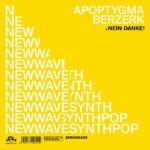 The project of Norwegian Stephan Groth, APOPTYGMA BERZERK went Deutsch on the ‘Nein Danke!’ EP while displaying a prominent “NEWWAVESYNTHPOP” legend on its artwork. ‘Nearest’ saw Stephan’s live bandmate and brother Jonas step into the limelight on a chilled electronic ballad ‘Nearest’ that possessed the same ethereal qualities as the best known APOP track ‘Kathy’s Song’. Jonas Groth has since stepped fully up to the front in his own synthpop duo PISTON DAMP.
The project of Norwegian Stephan Groth, APOPTYGMA BERZERK went Deutsch on the ‘Nein Danke!’ EP while displaying a prominent “NEWWAVESYNTHPOP” legend on its artwork. ‘Nearest’ saw Stephan’s live bandmate and brother Jonas step into the limelight on a chilled electronic ballad ‘Nearest’ that possessed the same ethereal qualities as the best known APOP track ‘Kathy’s Song’. Jonas Groth has since stepped fully up to the front in his own synthpop duo PISTON DAMP.
Available on the EP ‘Nein Danke!’ via Pitch Black Drive
Text by Chi Ming Lai
Photo by Catrine Christensen
31st December 2022

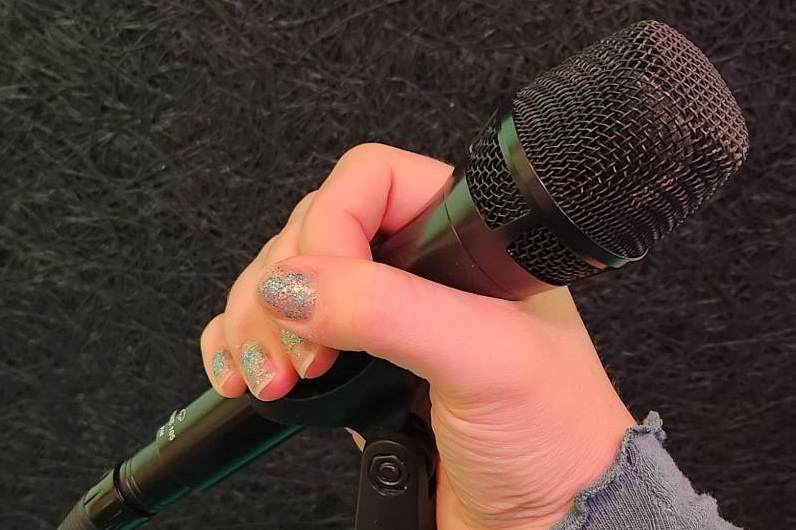
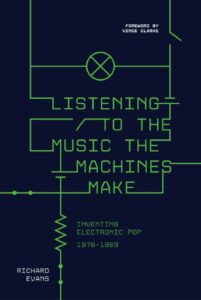
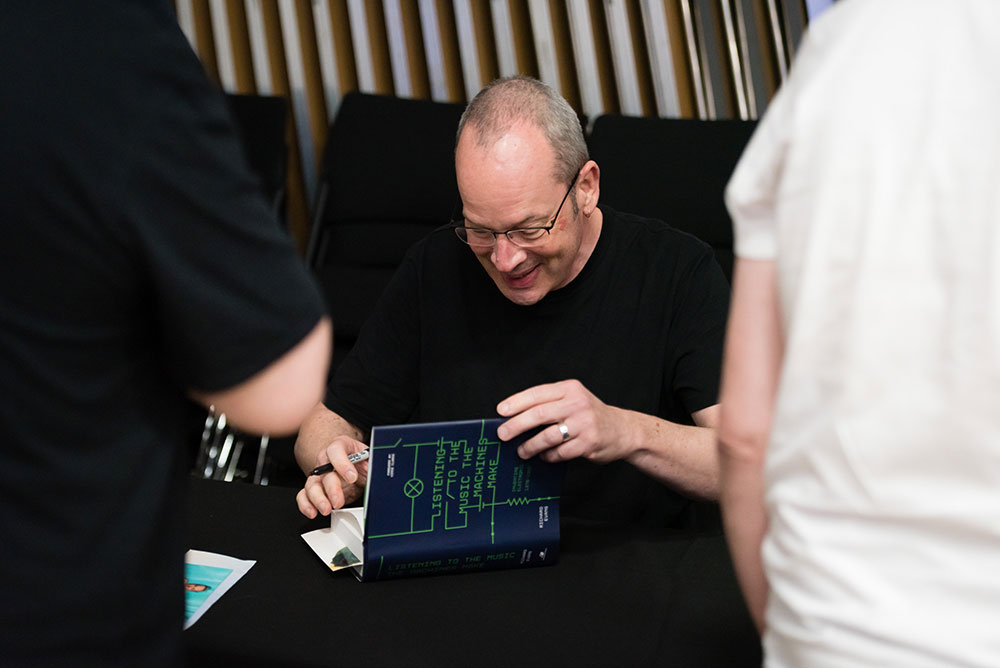
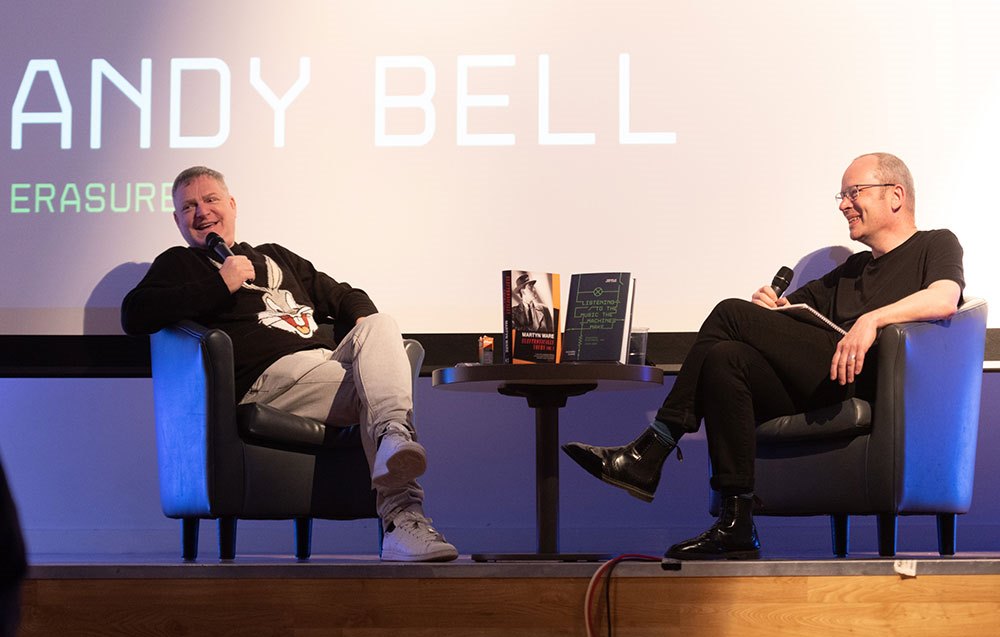
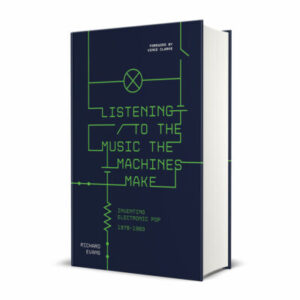
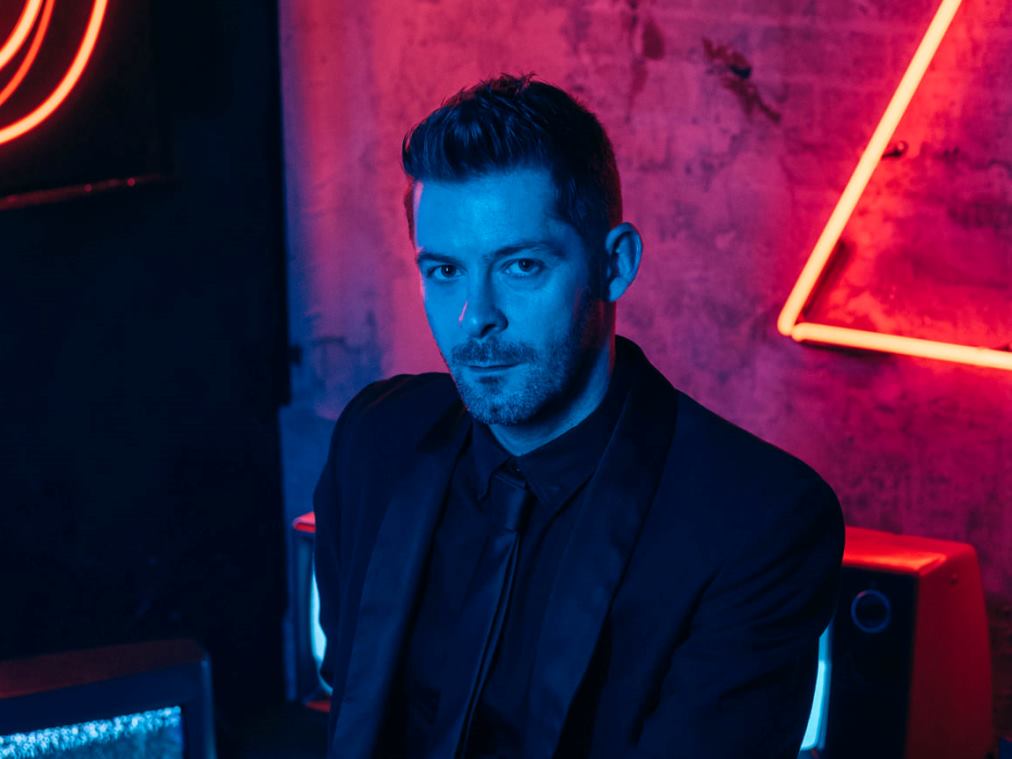
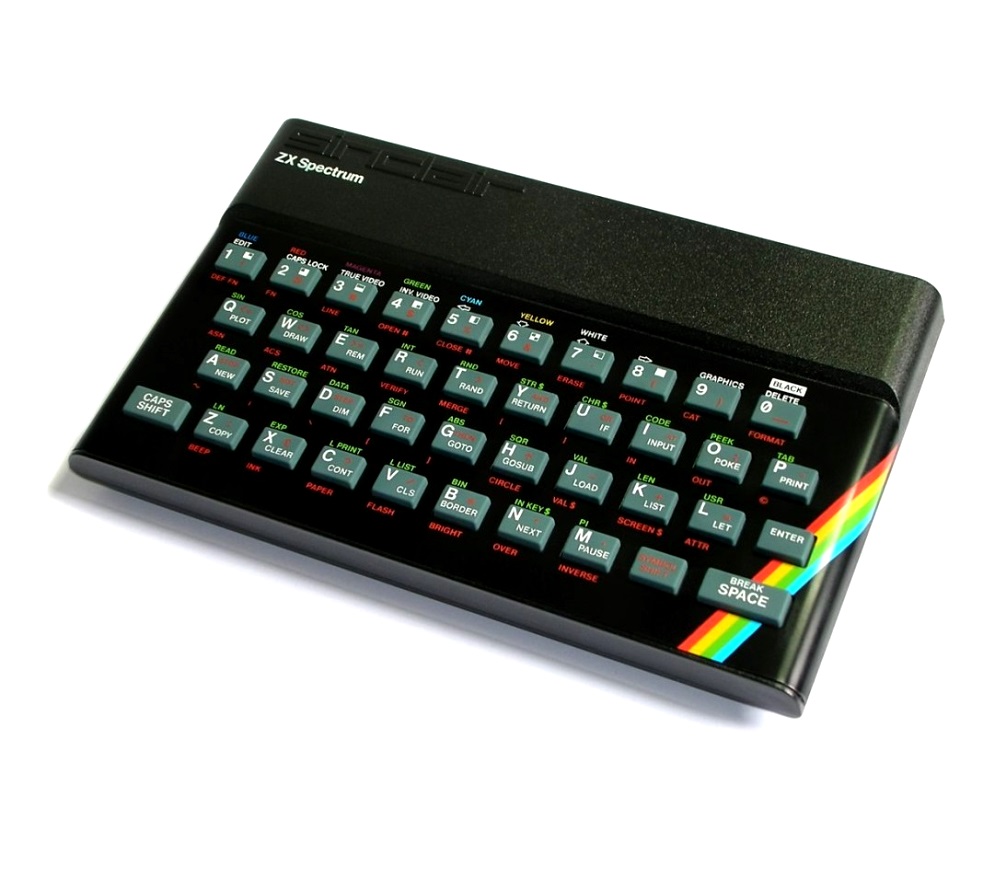
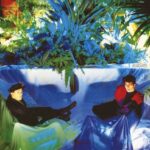
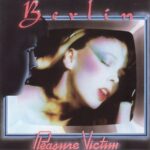
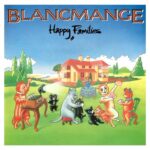
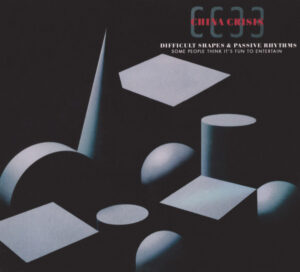

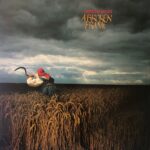
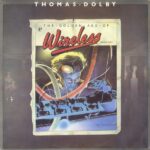
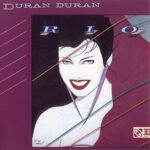
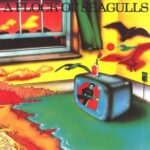
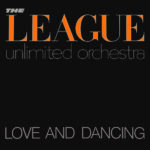
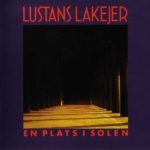
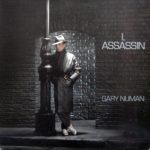
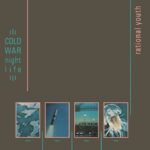 Montreal’s
Montreal’s 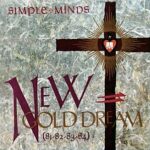
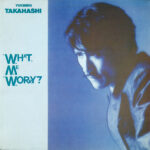
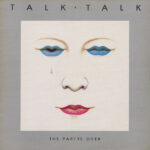
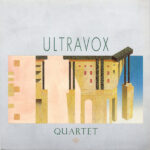
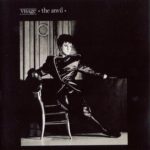
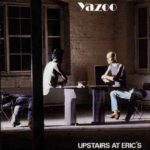
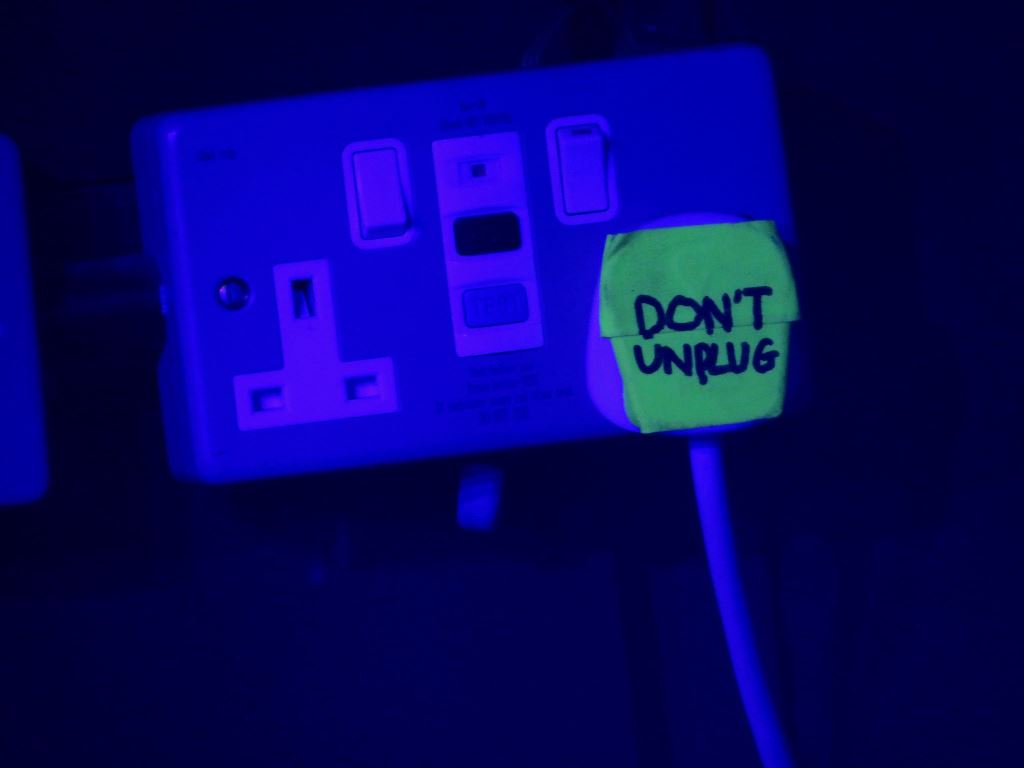

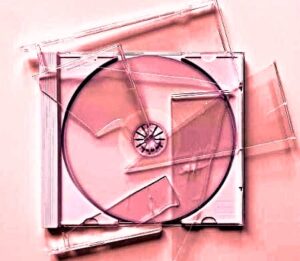
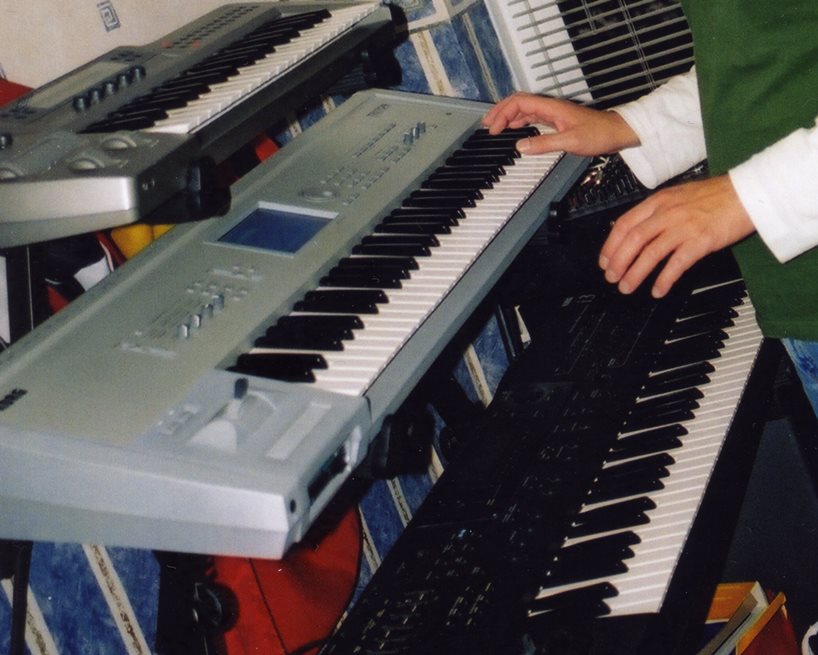
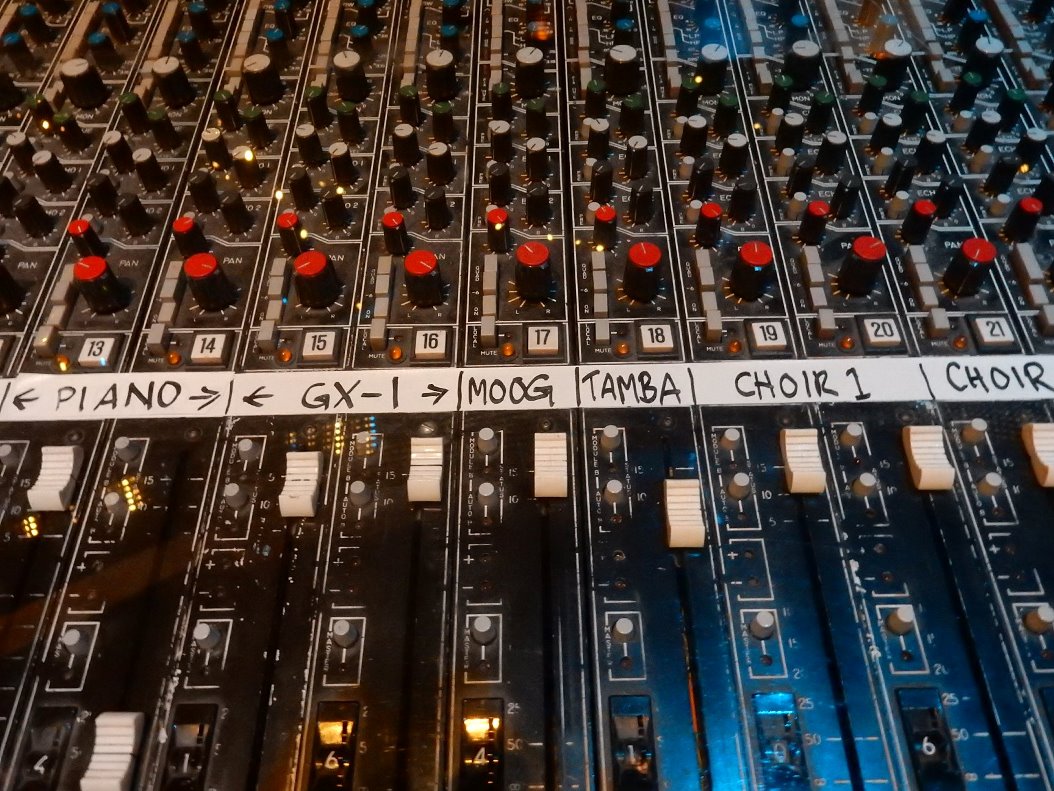
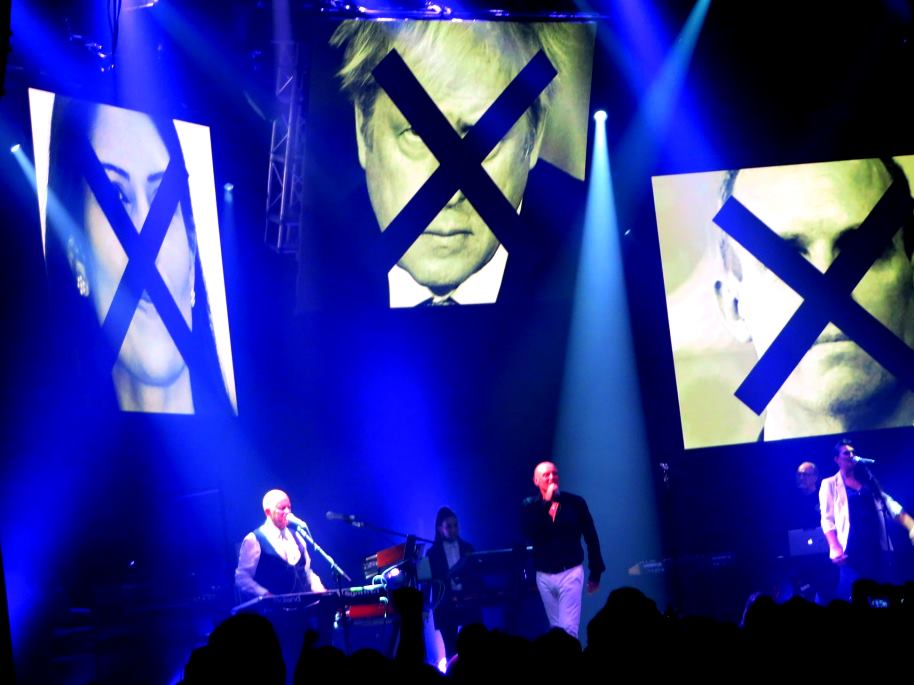
Follow Us!